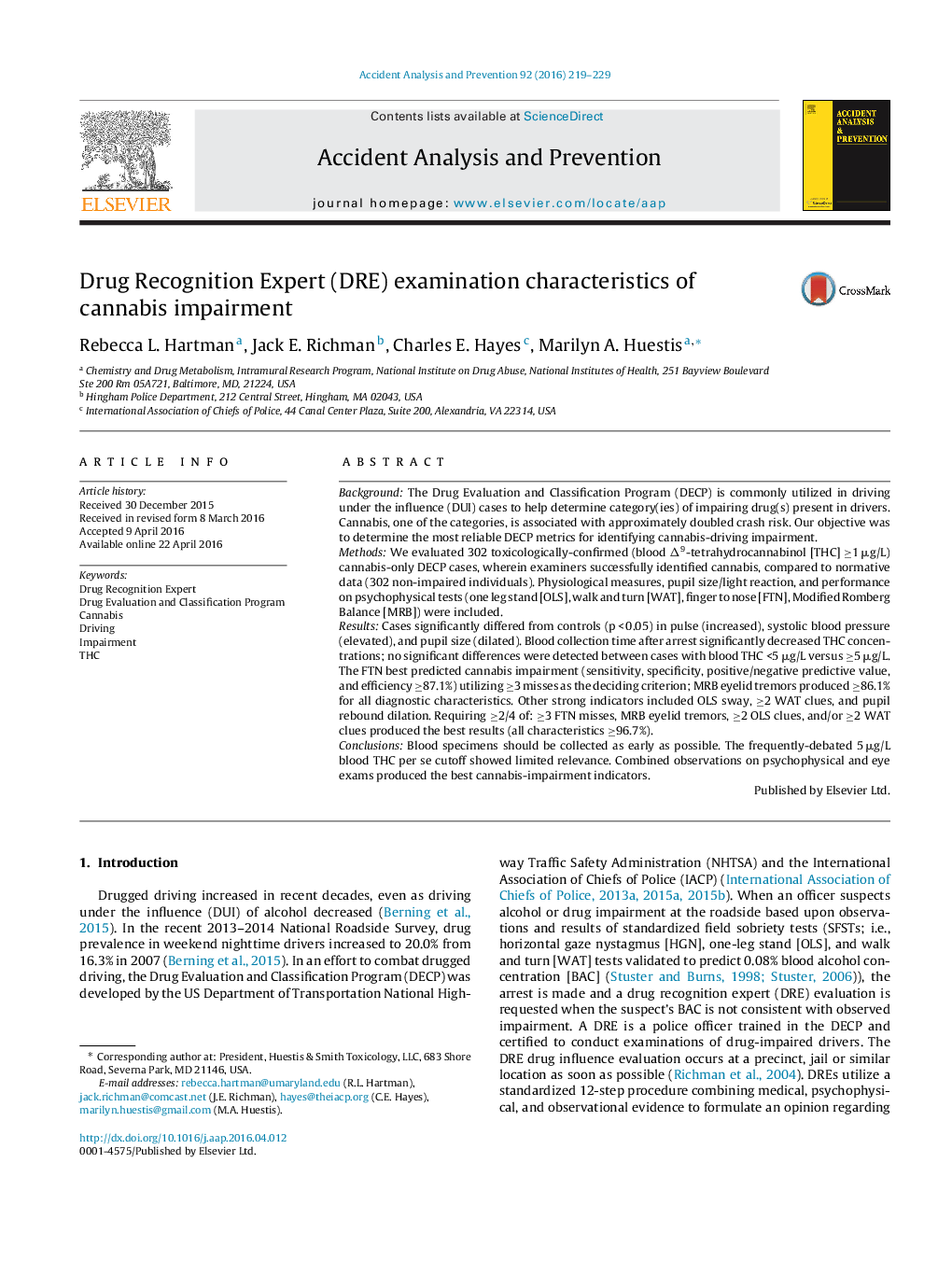| کد مقاله | کد نشریه | سال انتشار | مقاله انگلیسی | نسخه تمام متن |
|---|---|---|---|---|
| 572053 | 1452905 | 2016 | 11 صفحه PDF | دانلود رایگان |
• Cannabis-only impaired driving Drug Recognition Expert cases were evaluated.
• Impairment indicators common to cannabis were identified and compared to controls.
• Blood THC concentrations decreased with increasing blood collection time post-stop.
• There were no significant differences in cases with <5 μg/L vs. ≥5 μg/L blood THC.
• Combining multiple observations produced the best cannabis impairment indicators.
BackgroundThe Drug Evaluation and Classification Program (DECP) is commonly utilized in driving under the influence (DUI) cases to help determine category(ies) of impairing drug(s) present in drivers. Cannabis, one of the categories, is associated with approximately doubled crash risk. Our objective was to determine the most reliable DECP metrics for identifying cannabis-driving impairment.MethodsWe evaluated 302 toxicologically-confirmed (blood Δ9-tetrahydrocannabinol [THC] ≥1 μg/L) cannabis-only DECP cases, wherein examiners successfully identified cannabis, compared to normative data (302 non-impaired individuals). Physiological measures, pupil size/light reaction, and performance on psychophysical tests (one leg stand [OLS], walk and turn [WAT], finger to nose [FTN], Modified Romberg Balance [MRB]) were included.ResultsCases significantly differed from controls (p < 0.05) in pulse (increased), systolic blood pressure (elevated), and pupil size (dilated). Blood collection time after arrest significantly decreased THC concentrations; no significant differences were detected between cases with blood THC <5 μg/L versus ≥5 μg/L. The FTN best predicted cannabis impairment (sensitivity, specificity, positive/negative predictive value, and efficiency ≥87.1%) utilizing ≥3 misses as the deciding criterion; MRB eyelid tremors produced ≥86.1% for all diagnostic characteristics. Other strong indicators included OLS sway, ≥2 WAT clues, and pupil rebound dilation. Requiring ≥2/4 of: ≥3 FTN misses, MRB eyelid tremors, ≥2 OLS clues, and/or ≥2 WAT clues produced the best results (all characteristics ≥96.7%).ConclusionsBlood specimens should be collected as early as possible. The frequently-debated 5 μg/L blood THC per se cutoff showed limited relevance. Combined observations on psychophysical and eye exams produced the best cannabis-impairment indicators.
Journal: Accident Analysis & Prevention - Volume 92, July 2016, Pages 219–229
